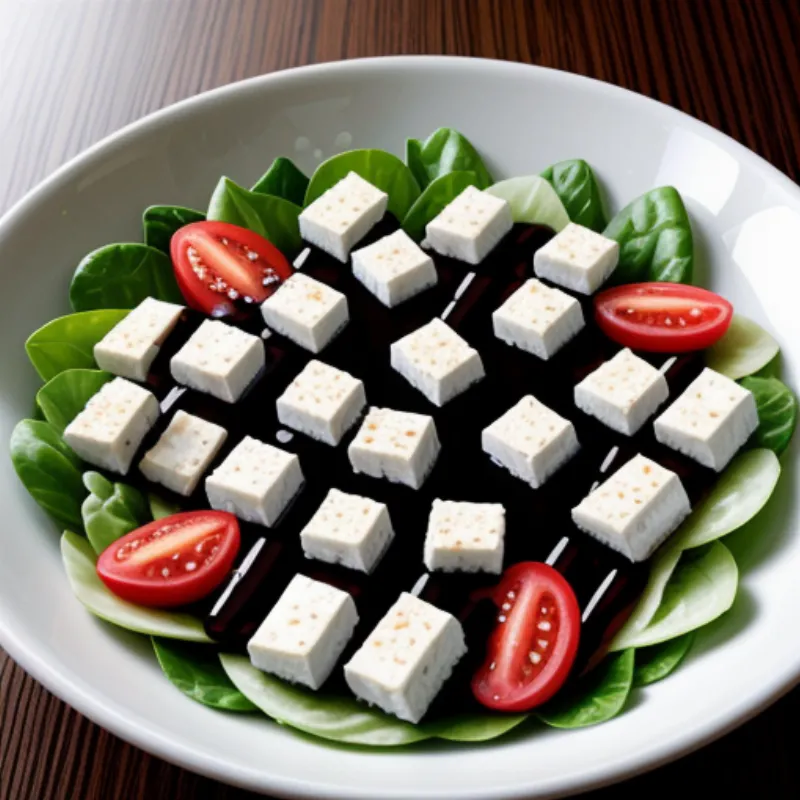Balsamic glaze, that rich and tangy elixir, is a culinary chameleon, seamlessly transitioning from savory dishes to sweet treats. Its complex sweetness, with hints of tartness, can elevate a simple salad to gourmet status or transform a cheeseboard into an extravagant affair. If you’ve ever wondered about the magic behind this versatile condiment, you’re in the right place. Today, we’re demystifying the process of making balsamic glaze at home. It’s simpler than you might think, and the reward is a jar of homemade goodness that puts store-bought versions to shame.
Unraveling the Art of Balsamic Glaze
Before we dive into the how-to, let’s take a quick detour to appreciate the star of the show: balsamic vinegar. Hailing from Modena, Italy, this vinegar is a product of time and tradition, crafted from cooked grape must (the juice, seeds, and skins of grapes) that’s aged in wooden barrels for years, developing its signature dark hue and complex flavor profile.
Balsamic glaze takes this already incredible ingredient a step further by reducing the vinegar down to a syrupy consistency, concentrating its sweetness and intensifying its flavors. The result is a luxurious condiment that adds a touch of culinary sophistication to any dish it graces.
Crafting Your Own Balsamic Glaze: A Symphony of Flavor
Making balsamic glaze is surprisingly straightforward. With just one ingredient and a bit of patience, you’ll be well on your way to enjoying homemade balsamic glaze that will have everyone asking for your secret.
Ingredients: The Essence of Simplicity
- 1 cup (237ml) balsamic vinegar
That’s it! Yes, you read that right. Just pure, unadulterated balsamic vinegar is all you need.
Equipment: Your Culinary Arsenal
- Small saucepan
- Whisk
- Jar for storing
Instructions: A Culinary Dance in Five Easy Steps
- The Reduction Ritual: Pour the balsamic vinegar into the saucepan.
- Simmering Symphony: Place the saucepan over medium heat and bring the vinegar to a gentle simmer. Avoid a rolling boil, as this can cause the glaze to burn.
- Patience, My Friend: Allow the vinegar to simmer for 10-15 minutes, stirring occasionally. As it simmers, you’ll notice the vinegar reducing and thickening.
- Testing, Testing: To check for doneness, dip the back of a spoon into the glaze. If it coats the spoon and slowly drips off, you’ve achieved glaze perfection. Keep in mind that the glaze will thicken further as it cools.
- Bottling Your Masterpiece: Once the glaze has reached the desired consistency, remove it from the heat and let it cool slightly before transferring it to a sterilized jar.
Tips and Tricks: Mastering the Glaze Game
- Sweet Temptation: While traditional balsamic glaze lets the vinegar’s natural sweetness shine, you can add a touch of sweetness by stirring in a teaspoon of honey or maple syrup towards the end of the cooking time.
- Flavor Infusion: Elevate your glaze by adding aromatics like a sprig of rosemary, a few black peppercorns, or a pinch of red pepper flakes to the vinegar during the simmering process.
- Storage Savvy: Store your homemade balsamic glaze in an airtight container in the refrigerator for up to 2 weeks.
 Balsamic glaze simmering in a saucepan
Balsamic glaze simmering in a saucepan
Balsamic Glaze FAQs: Addressing Your Culinary Queries
Q: Can I use any type of balsamic vinegar for making glaze?
A: While you can technically use any balsamic vinegar, opting for a higher-quality, aged balsamic vinegar will yield a more flavorful and complex glaze.
Q: My glaze turned out too thick. What can I do?
A: Don’t fret! Simply whisk in a teaspoon of water or balsamic vinegar at a time until you reach the desired consistency.
Q: Can I make balsamic glaze in advance?
A: Absolutely! In fact, making balsamic glaze ahead of time allows the flavors to meld and deepen.
A World of Culinary Possibilities: Unveiling the Versatility of Balsamic Glaze
Balsamic glaze is a culinary chameleon, adapting effortlessly to a myriad of dishes. Here are just a few ways to incorporate its magic into your culinary creations:
- Salads: Drizzle it over fresh greens, juicy tomatoes, and creamy goat cheese for an explosion of flavor.
- Grilled Vegetables: Add a touch of sweetness and tang to grilled asparagus, zucchini, or eggplant.
- Roasted Meats: Elevate roasted chicken, pork, or beef with the rich, savory notes of balsamic glaze.
- Cheeseboards: Pair it with sharp cheddar, creamy brie, or tangy blue cheese for a symphony of flavors.
- Desserts: Drizzle it over vanilla ice cream, fresh strawberries, or angel food cake for an unexpectedly delightful treat.
 Balsamic glaze drizzled over a fresh salad
Balsamic glaze drizzled over a fresh salad
A Final Word: Embracing the Art of Homemade Balsamic Glaze
Making your own balsamic glaze is a testament to the simple pleasures of homemade goodness. With minimal effort and just one ingredient, you can create a condiment that elevates everyday dishes to new heights. So, why not embark on this culinary adventure and experience the joy of crafting your own balsamic glaze? Your taste buds will thank you!
We’d love to hear about your balsamic glaze adventures! Share your creations, tips, and culinary discoveries in the comments below. Happy cooking!
